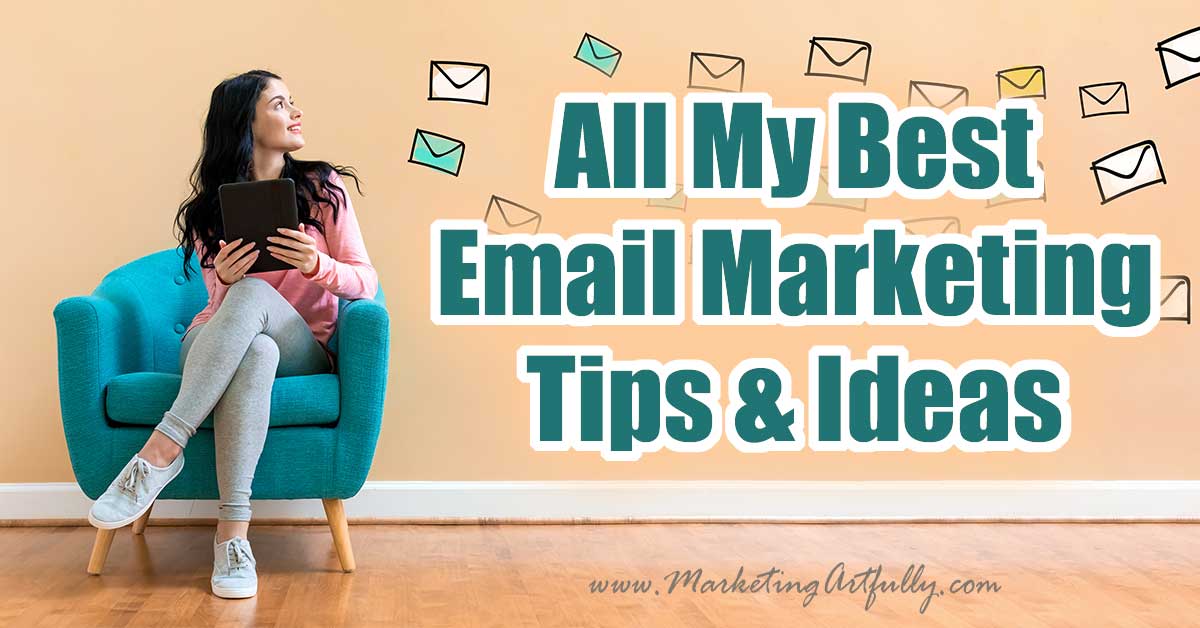Email marketing remains one of the most effective digital marketing strategies in 2025, offering businesses a direct line of communication with their audience. However, as competition intensifies, simply sending mass emails to your subscribers is no longer enough. Consumers expect personalized and relevant content that resonates with their needs, making email list segmentation a crucial part of any successful marketing strategy. Segmentation involves dividing your email list into smaller, targeted groups based on specific criteria, allowing for tailored messaging and improved engagement rates.
In this article, we’ll explore how to segment your email list for better campaigns, along with practical tips and insights to optimize your efforts. Whether you’re running an online business, exploring small business ideas, or diving into digital marketing, mastering segmentation can transform your email marketing performance and drive meaningful results.
Why Email List Segmentation Matters
Email list segmentation offers numerous benefits, from increased open rates to higher conversion rates. When subscribers receive content that aligns with their preferences and interests, they’re more likely to engage with your emails and take action. This personalized approach not only boosts your campaign ROI but also strengthens customer relationships and brand loyalty.
For businesses exploring business trends or launching startup ideas, segmentation can be a game-changer. It enables you to understand your audience better, craft relevant messaging, and deliver value at every touchpoint.
Key Criteria for Email List Segmentation
To segment your email list effectively, you need to identify meaningful criteria that align with your marketing goals. Here are some common segmentation categories:
- Demographics: Segmenting by age, gender, location, income level, or education helps you tailor content to specific groups. For example, a business offering health and wellness startups can create targeted campaigns for different age groups based on their unique health concerns.
- Behavioral Data: Understanding how subscribers interact with your brand is essential. Segment your list based on past purchases, browsing history, email engagement, or event attendance. This approach is especially useful for e-commerce businesses looking to send personalized product recommendations.
- Psychographics: Dive deeper into your audience’s interests, values, and lifestyle choices. For instance, sustainable businesses can target environmentally conscious subscribers with eco-friendly product offerings.
- Purchase History: Analyze your customers’ buying habits to identify frequent buyers, one-time purchasers, or high-value customers. Tailor your email campaigns to encourage repeat purchases or upsell complementary products.
- Engagement Level: Segment your list based on how actively subscribers interact with your emails. For example, you can create separate campaigns for highly engaged subscribers and re-engagement campaigns for inactive ones.
- Stage in the Customer Journey: Tailor your messaging based on where subscribers are in their journey—whether they’re new leads, loyal customers, or lapsed users. For businesses focused on tech-based startups, nurturing leads with relevant content can drive conversions.

Tips for Effective Email List Segmentation
Now that you know the key criteria for segmentation, let’s explore actionable tips to implement and optimize your strategy:
- Collect the Right Data
Effective segmentation begins with collecting accurate and relevant data. Use signup forms, surveys, and preference centers to gather information about your subscribers. Ensure your data collection process aligns with privacy regulations and respects user consent. - Leverage Automation Tools
Advanced automation tools powered by AI technologies tools simplify the segmentation process by analyzing subscriber behavior and preferences in real-time. These tools can automatically group your audience based on specific criteria, saving time and ensuring precision. - Create Dynamic Segments
Dynamic segmentation allows your email list to update automatically as subscriber behavior changes. For example, if a subscriber makes a purchase, they’re automatically moved to a post-purchase segment. This approach ensures your campaigns remain relevant and timely. - Personalize Your Content
Once your segments are established, craft personalized email content that speaks directly to each group. Include relevant subject lines, visuals, and calls to action that resonate with their preferences. For content marketing campaigns, tailoring content to specific segments can drive higher engagement. - Test and Optimize
Regularly test your segmentation strategy to identify what works best for your audience. A/B testing different subject lines, offers, or email designs can provide valuable insights. Analyze metrics like open rates, click-through rates, and conversions to refine your approach. - Incorporate Behavioral Triggers
Behavioral triggers are automated emails sent based on specific actions, such as abandoned cart reminders or post-purchase follow-ups. For businesses offering digital services, using triggers can nurture leads and encourage repeat business. - Align with Business Goals
Ensure your segmentation strategy aligns with your broader marketing goals. Whether you’re focusing on future industry insights or driving sales for e-commerce innovations, your campaigns should contribute to your overall objectives.
Advanced Segmentation Techniques for 2025
As email marketing technology advances, new segmentation techniques are emerging. Here are some cutting-edge approaches to consider:
- Predictive Analytics: Using AI-powered tools to predict subscriber behavior and preferences enables hyper-personalized campaigns. For example, predicting which products a customer is likely to purchase allows for tailored recommendations.
- Geo-Targeting: Segmenting based on location enables you to deliver region-specific offers or event invitations. This is particularly useful for businesses with a physical presence or localized services.
- Sentiment Analysis: Analyzing subscriber sentiment from social media interactions or email responses can provide valuable insights. For instance, identifying positive sentiment allows you to target loyal customers with exclusive rewards.
- Lifecycle Segmentation: Categorizing subscribers based on their lifecycle stage ensures you deliver relevant messaging at the right time. For example, new leads might receive educational content, while loyal customers get exclusive discounts.
- Hyper-Segmentation: Combining multiple criteria for granular segmentation ensures highly targeted campaigns. For example, segmenting by location, purchase history, and engagement level allows for precise messaging.
Conclusion
Segmenting your email list is essential for running effective and impactful campaigns in 2025. By understanding your audience, leveraging advanced tools, and implementing innovative techniques, you can create personalized experiences that drive engagement and conversions. Whether you’re exploring digital marketing trends or scaling startup growth strategies, segmentation is a powerful tool to elevate your email marketing efforts and achieve your business goals.

